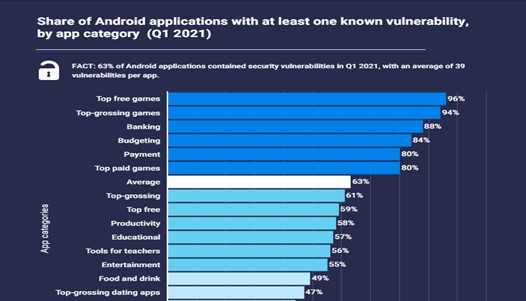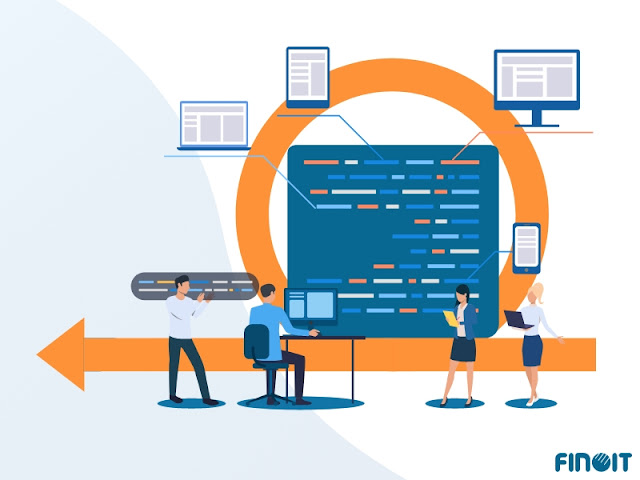5 Things You Should Know About IoT Security

And deployments as more and more businesses are identifying the need to get IoT security intact and upright, right from the scratch.
It is estimated that the IoT security market will touch $4.4bn by 2022. Several industry researches, of late, have revealed that cybersecurity is the paramount concern for industrial IoT market today.
IoT security is essential for secure development and operation of robust, scalable IoT services and solutions that bisect the virtual and real worlds between people, systems and objects.
But then, as of recent research, it is evident that IoT security is highly complicated and market domain is massively fragmented with quite a few vendors locking horns to cater to the needs.
In this post, we'll discuss the 5 most important thing you should know about IoT security:
1. IoT Security Spending Is Increasing Drastically
Global end-user spending on third-party IoT security solutions is currently projected at $703M as of 2017 and it is likely to increase at a CAGR of 44 percent to emerge as a $4.4BN market by 2022, galvanized by new regulations and a rapid increase in IoT deployment.
Along with various security tools provided by different IoT platforms, the global IoT security setup is a confluence of ingenious startups and established industry-leaders such as enterprise and cloud software companies, infrastructure providers, and global chip manufacturers.
At present, there are around 150 independent security vendors in IoT that cater to the rising needs and challenges across different industries, with manufacturing/industrial being the largest block for IoT security adoption.
Example: A giant automobile OEM recently evaluated factory vulnerabilities and found out that there were considerable gaps in today's IoT security infrastructure. In such event, the OEM plans to accentuate related IoT spending considerable over the next phase.
2. IoT Is Witnessing an Increase in the Number of Security Threats
One standout difference between the IoT space and various other earlier internet technologies is the number of potential threats that are considerably higher when it comes to IoT, due to the following prominent reasons:
- More points of exposure
- Increased attack impacts
- Across-the-stack threats
3. IoT Security Four-Layered Concept
IoT architectures needs a four-layered security mechanism in place that continually work to deliver seamless end-to-end security from the cloud to devices and everything connected in between across the complete lifecycle of the IoT solution. The 4 layers are:
- Device
Security components here consist of: device identity and device authentication, secure boot, chip security, data at rest, and physical security.
- Communication
Whether sensitive data is in transit over the networking layer (e.g, OPC-UA, IPv6, or Modbus), the physical layer (e.g., Ethernet, WiFi, or 802.15.4), or the application layer (e.g., Web-sockets, MQTT, or CoAP) unsecured communication channels can get vulnerable to intrusions and attacks like the man-in-the-middle intrusions. Security components in this layer consist of: IPS, IDS, end-to-end encryption, access control, and firewall.
- Cloud
- Lifecycle management
Security components in this layer include: activity monitoring, risk assessment, policies & auditing, user awareness assessment, updates and patches, vendor control, and secure decommissioning.
4. Increasing IoT Security Automation
With projected rise to billions of connected devices, handling various IoT security tasks manually (for example., isolating compromised devices and revoking certificates, etc.), won't actually be feasible.
Therefore, several IoT security automation processes that merge artificial intelligence and security solutions are gaining popularity.
The next generation of activity monitoring is based on anomaly detection, which is powered by hybrid machine learning algorithm. Machines can now be taught to objectively classify 'good' files from the 'bad' ones in real-time on the basis of mathematical risk factors.
Through objective classification autonomous decision making can be introduced in IoT architecture to revamp the way IoT categorizes and control file execution.
5. Types of IoT Cybercriminals
The 4 most common types of IoT hackers are:
- Amateurs: e.g., hobbyists and script kiddies.
- Petty cybercriminals: e.g., low-level attackers.
- Cyberespionage groups: e.g., crime groups or organized syndicates such as GreenBug, Armada Collective, and Black Vine.
- Hacktivists/ Terrorists: e.g., non-state professionals such as political hacktivists or Oxblood Ruffin.
However, the most common type of IoT intruders are cyberespionage groups having massive resources and skilled petty cyber criminals.
In most cases, these criminals have advanced malware program that is competent to evade and mutate on IoT networks for a longer period of time or they can effortlessly leverage DDoS attacks with the intent of blackmailing.


This comment has been removed by the author.
ReplyDeleteNice article I was really impressed by seeing this blog, it was very interesting and it is very useful and Informative blog!!
ReplyDeleteMaven Technology is your go-to solution in IoT App Development Solutions. Our expertise lies in diverse domains and industry exposure. Please connect with us to get your IoT app development needs done within the commitment time.
Many Thanks..!!